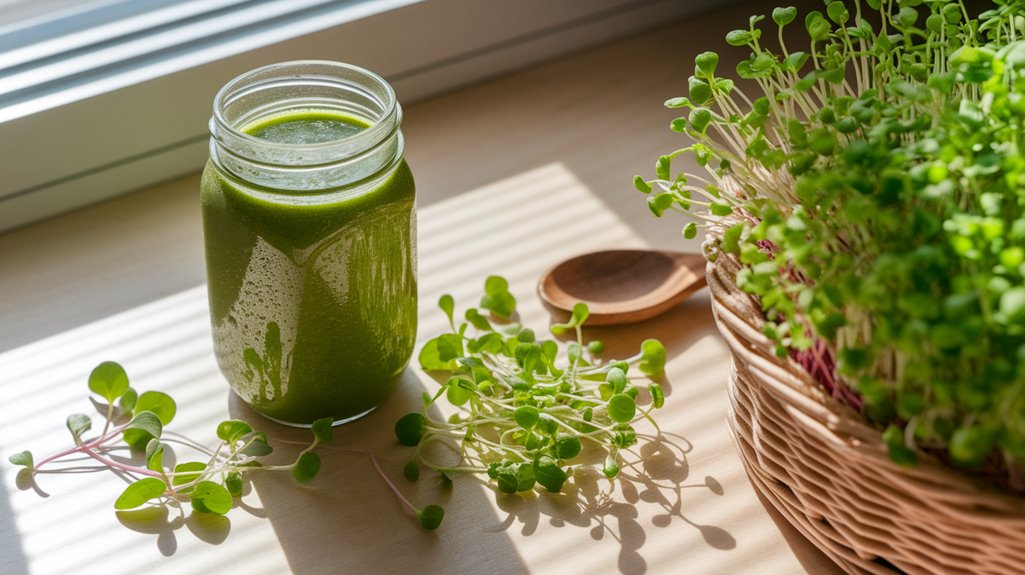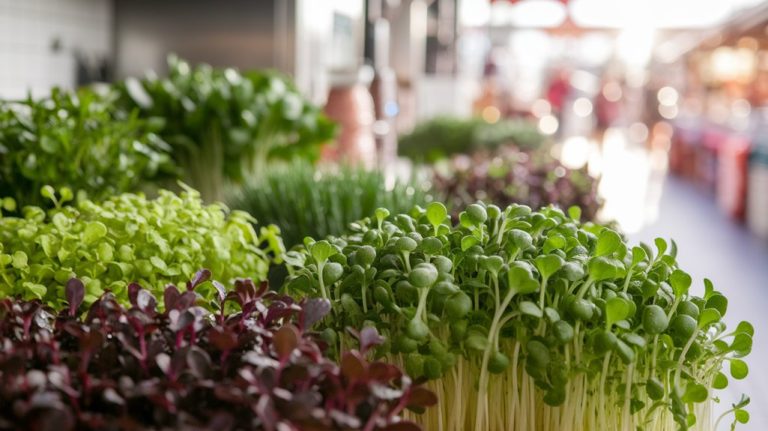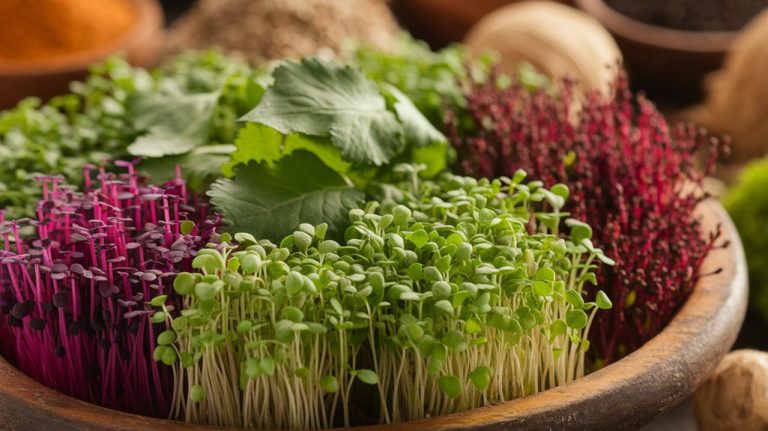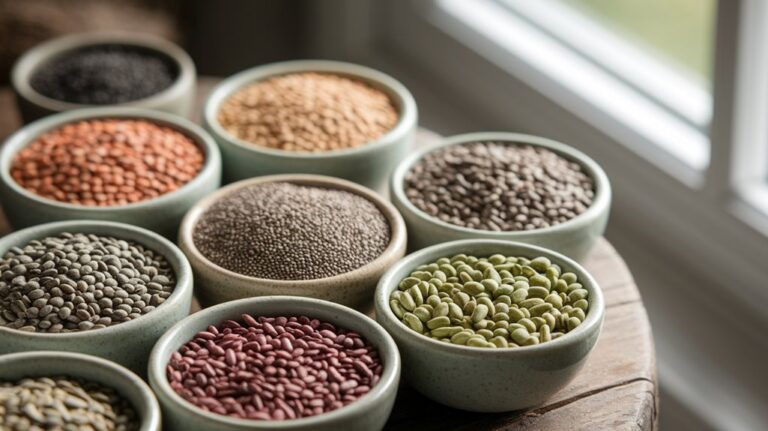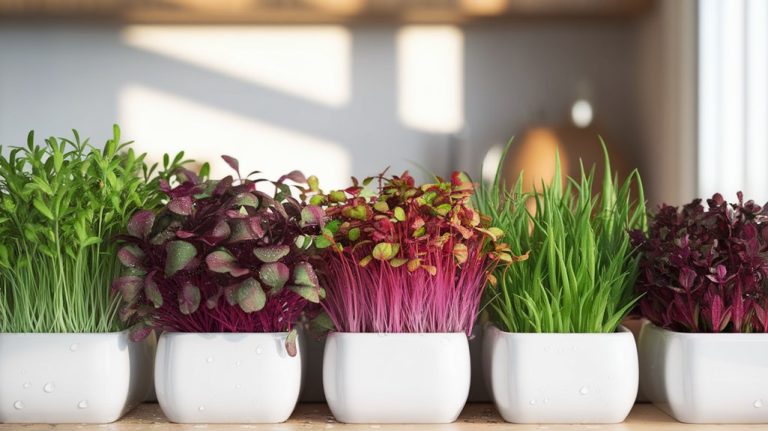Using Microgreens in Smoothies: Recipes and Benefits
I love adding microgreens to smoothies because they’re nutrient powerhouses. They can contain up to 40 times more vitamins and minerals than mature greens, making them a fantastic choice. For instance, kale microgreens add essential vitamins A, C, and K without overpowering the taste. I’ve tried recipes with radish and sunflower microgreens, which elevate flavors while boosting health benefits. If you’re curious, I’ll share more about growing these greens and additional delicious recipes!
Key Takeaways
- Microgreens are nutrient-dense, offering up to 40 times more vitamins and minerals than mature plants, enhancing smoothie nutrition significantly.
- Popular options for smoothies include kale, radish, sunflower, and basil microgreens, each adding unique flavors and health benefits.
- Recipes like Kale & Basil Bliss and Spicy Radish Kick showcase how to incorporate microgreens into delicious, health-boosting smoothies.
- The antioxidants and fiber in microgreens support heart health and digestion, making smoothies healthier and more satisfying.
- Growing microgreens at home is easy; choose quality seeds, ensure proper lighting, and harvest at 1-2 inches for optimal flavor.
The Nutritional Powerhouse of Microgreens

When I discovered the incredible benefits of microgreens, I realized they’re not just a trendy addition to salads; they’re a nutritional powerhouse packed with vitamins, minerals, and antioxidants.
Research shows that microgreens can contain up to 40 times more nutrients than their mature counterparts. For instance, varieties like broccoli and kale are rich in vitamins C, E, and K, crucial for immune function and skin health. They also provide essential minerals like calcium and magnesium, which support bone health and energy levels.
Incorporating microgreens into my diet has been easy and rewarding. Just a small handful can elevate my meals, making them not only more flavorful but also more nutritious.
Top Microgreens to Add to Your Smoothies
While exploring the world of microgreens, I found that certain varieties are particularly fantastic for smoothies, adding both nutrition and flavor.
First up is kale microgreens; they’re rich in vitamins A, C, and K, providing a nutrient boost without overpowering the taste.
Next, I love adding radish microgreens for their peppery flavor and high levels of antioxidants.
If you’re aiming for a citrusy twist, try sunflower microgreens; they offer healthy fats and a delightful crunch.
Finally, basil microgreens not only enhance flavor but also pack anti-inflammatory properties.
Incorporating these microgreens into your smoothies is an easy way to elevate your health while enjoying diverse tastes.
Delicious Microgreen Smoothie Recipes
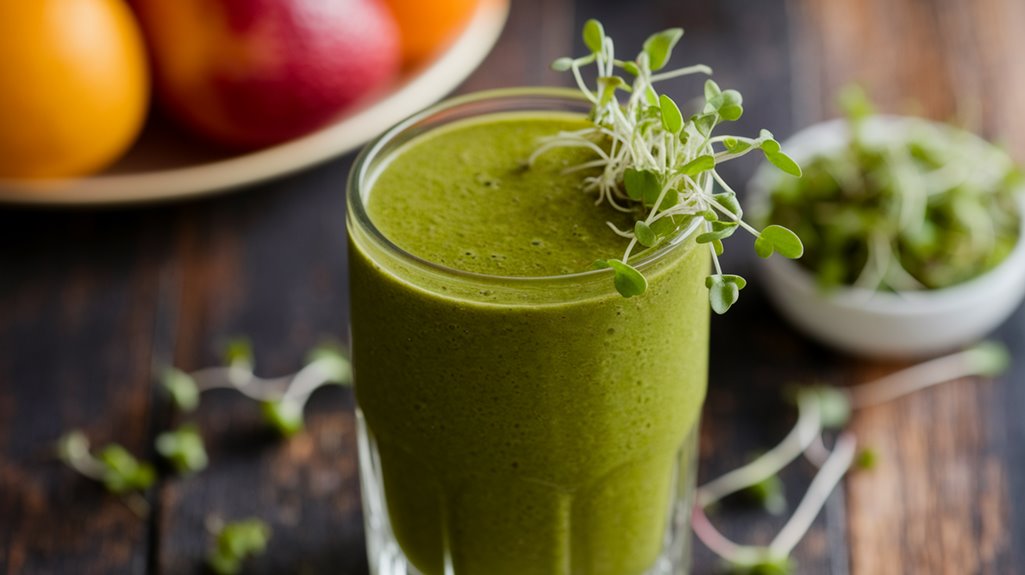
Incorporating microgreens into smoothies isn’t just about adding nutrition; it’s an opportunity to create delicious flavor combinations.
I love experimenting with different ingredients, and here are some of my favorite microgreen smoothie recipes:
- Kale & Basil Bliss: Blend kale microgreens, fresh basil, banana, and almond milk for a refreshing treat.
- Spicy Radish Kick: Combine radish microgreens, pineapple, coconut water, and a hint of lime for a tropical twist.
- Pea & Mint Refresh: Use pea microgreens, fresh mint, spinach, and green apple for a vibrant, energizing drink.
- Beetroot & Cilantro Fusion: Mix beet microgreens, Greek yogurt, strawberries, and honey for a creamy, antioxidant-rich smoothie.
These combinations not only taste great but also elevate my smoothie game.
Give them a try!
Health Benefits of Incorporating Microgreens
Not only do microgreens add vibrant flavors to my smoothies, but they also pack a powerful nutritional punch.
These tiny greens are rich in vitamins and minerals, often containing higher concentrations than their mature counterparts. For instance, studies show microgreens like broccoli and kale can offer up to 40 times more nutrients.
Incorporating them into my smoothies boosts my intake of antioxidants, which help combat oxidative stress and inflammation. Plus, they provide essential phytochemicals that support heart health and may even lower cholesterol levels.
Their fiber content aids digestion as well. By adding just a handful of microgreens, I enhance not only the taste but also the overall health benefits of my smoothies, making each sip a nutritious delight.
Tips for Growing and Using Microgreens in Smoothies
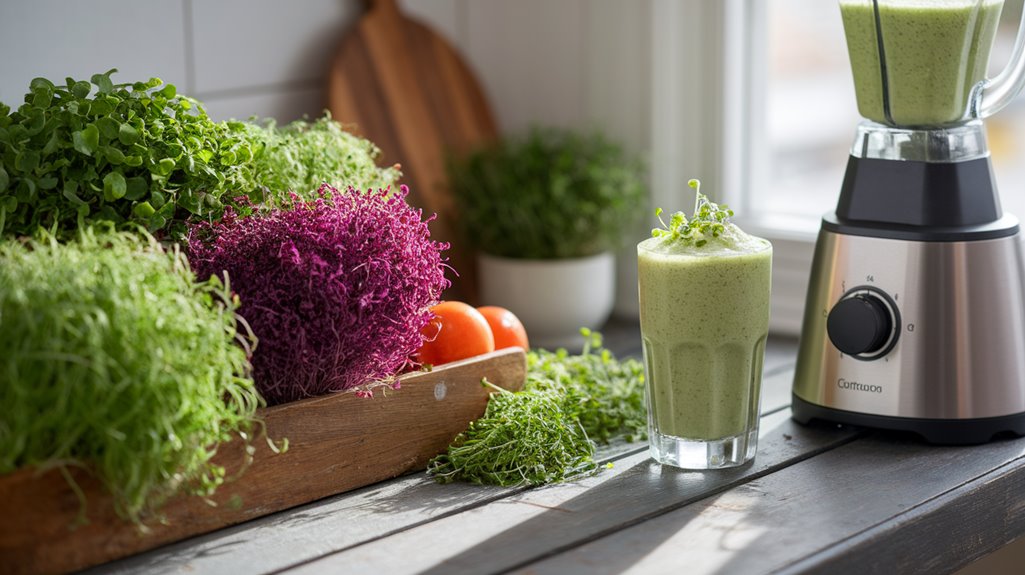
Growing microgreens at home is easier than you might think, and they can elevate your smoothies to a new level. Here are some tips to get you started:
- Choose the Right Seeds: Opt for nutrient-dense varieties like kale, spinach, or arugula for maximum health benefits.
- Use Quality Soil: A lightweight potting mix ensures proper drainage and growth.
- Provide Adequate Light: Place your microgreens in a sunny spot or use grow lights to promote healthy development.
- Harvest at the Right Time: Pick your microgreens when they’re about 1-2 inches tall for the best flavor and nutrition.
With these simple steps, you can enjoy fresh microgreens in your smoothies while boosting your nutrient intake effortlessly!
Frequently Asked Questions
Conclusion
Incorporating microgreens into my smoothies has not only enhanced their flavor but also boosted their nutritional value significantly. With a variety of options to choose from, like kale and radish microgreens, it’s easy to find the perfect fit for any blend. The health benefits are impressive, from increased vitamins to antioxidants. Whether you’re growing your own or purchasing them, adding microgreens is a simple way to elevate your smoothie game and support your overall health.

